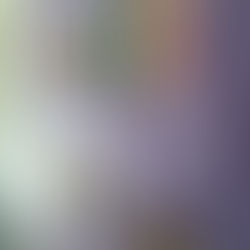Leaf Studies: Blind Contours, Observation Drawings, Cyanotypes, Collage
Second grade has been working on their observation skills by studying leaves. We started the unit by learning about blind contours: when you draw the outline of something without looking at your paper while you draw it. The trick with this technique is to slowly trace the outline of the subject with your eyes, and try to connect the movement of your hand with the movement of your eyes without lifting the pencil from the paper. The result is a really loose and interesting, but not always a representational depiction of the subject. The process is very meditative and the outcome if always a fun surprise. We looked at artwork by Ian Sklarsky while learning about blind contours.
After looking at Sklarsky’s work and defining blind contour, the students and I went outside with clipboards, paper, pencils, and little paper plates to help prevent peeking. I demoed the process, and we started by writing our names while looking up at the sky. The students’ minds were BLOWN when they realized they could write their names without looking at the paper! Each student explored the area to find a leaf or two that they wanted to study, and then sat down to draw. Some were frustrated when their drawing didn’t look exactly like a leaf, and some had a hard time with the “no peeking” rule, but I emphasized that this exercise was all about the PROCESS, not the result.
After the students drew a few blind contours, we talked about texture and I showed them how to do a crayon texture rubbing. They were really excited about this magical process, and one student asked if you could make texture rubbings of other things. Someone even put their paper over a brick on the wall and rubbed the texture from it.
The next week, the students and I reviewed blind contours and then talked about how you might make a more detailed observation drawing. We looked at artwork by one of my favorite artists, Katie Scott, and discussed how you can make a more realistic drawing of a leaf by carefully drawing the contour and the texture.
The third part of this lesson was about observing leaves through cyanotypes. Cyanotype paper is light-sensitive and exposes in the sun. Whatever you place on the paper will block the sunlight and leave whatever it’s shadow falls on unexposed. It is an early photography process. We discussed Anna Atkins, a botanist and photographer from the 1800’s who is said to be the first female photographer. We also looked contemporary cyanotype artwork by Tatiana Parniakova.
Next we went outside, collected leaves, practiced our compositions, and then exposed our paper. It was an overcast day so the exposure took a little longer than usual.
The students were mesmerized when they saw what happened to the paper once we rinsed it in water. The part of the paper that was shaded by the leaves washed out to be white, and everywhere the sun had touched the paper and during the exposure process became a deeper blue. The contrast deepened even further as the cyanotypes dried.
Once we finished our blind contour drawings, crayon rubbings, observation drawings, and cyanotypes, it was time to frame it all and make 'em look nice!
I demonstrated for the students how to measure and measure a 2-inch border using a ruler, and how to glue down our leaf studies.
Some students were able to measure independently, but I'm glad it was a small class becuase many of them needed help.
After all of the classes had glued down their blind contour drawings, observation drawings, leaf rubbings, and cyanotypes, we had a day in which we labeled each of our studies using white colored pencils.
They all looked so great arranged in the hall, and each of their Leaf Studies was unique.




















